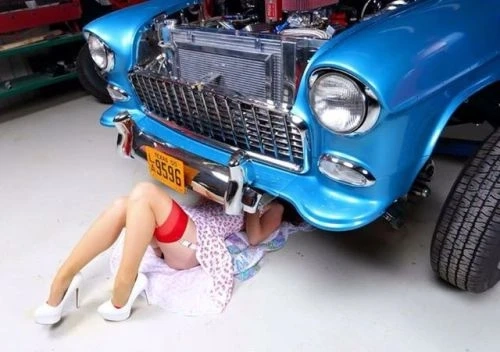Driving with under or over-inflated tyres can be pretty dangerous for you and your passengers. According to some studies, almost half of all passenger vehicles, SUVs and light trucks are driven on one or more poorly inflated tyres, which can lead to tyre failure. When the air pressure levels are either too low or too high, it will eventually affect the performance and handling of your tyres, increasing the friction with the road. Increased friction will cause your tyres to overheat, causing premature wear, blowouts and even tread separation.
Driving on poorly inflated tyres could be more expensive than you might think. Making sure that your Austone Tyres are correctly inflated can enhance your fuel mileage by more than three per cent. So, driving with over and under-inflated tyres is not just unhealthy and unsafe for your car, but you will end up spending a lot of money due to unnecessary fuel costs. The effects of under-inflation can be experienced not only while you are driving but also on your tyres itself. The whole internal structure of your tyres can get damaged if they are forced to function even when they are damaged.
Even though the ride quality is almost never affected, tyres without enough pressure will eventually lose grip during easy driving manoeuvres. On the other hand, cheap tyres with the right amount of air have more stability in its grip and handling with generally predictable and positive changes in motion. According to some experts, a large percentage of people drive on poorly-inflated tyres quite often without even noticing. Many of them do not even bother checking their tyres unless they look and feel lower. As long as their routes do not need to use any extreme manoeuvre, or they do not detect any unusual behaviour. Most drivers simply will never notice when the air pressure is not the best.
This is a pretty common misconception. Tyres can actually lose most of their pressure and appear fully inflated, and it can become dangerous once the driver suddenly needs to deal with extreme weather conditions or slippery surfaces and their car is incapable to appropriately stay under control. A crash may happen or even worse, serious car accidents where more people can get affected.
Blowouts and flat tyres can put you and other drivers at risk. A blowout can cause you to lose total control of your car and collide. Depending on how bad the blowout was, other motorists might swerve in order to evade pieces of debris flying all around the air and avoid more crashes. Most tyre manufacturers advise checking the air pressure at least once every month or after putting on gas.
How to know if your tyres have the right pressure
Several accidents can be prevented every year only if drivers inflate all of their tyres to the proper pressure. Never rely on the recommended amount of air pressure displayed on your tyres. Usually, that number only shows the maximum acceptable pressure, not the recommended amount for your specific tyres. If you want to find what is the correct air pressure, you just need to check your car’s manual. If you already know what the right pressure for you is, then you should get a gauge to check the tyre pressure as often as possible or before long trips. Remember to always review the pressure once your tyres are cold and do not forget to check all of them, even the spare tyre.



